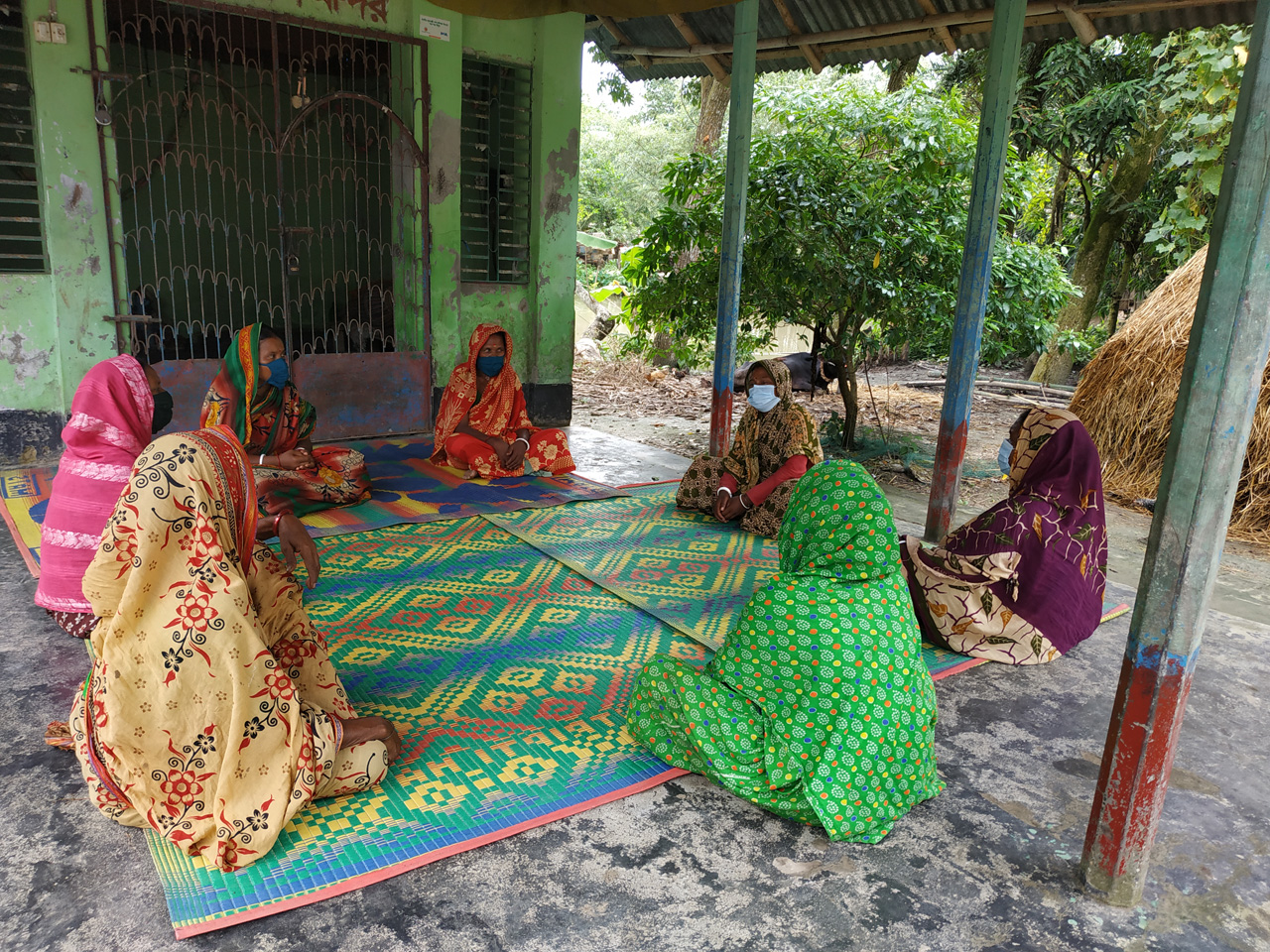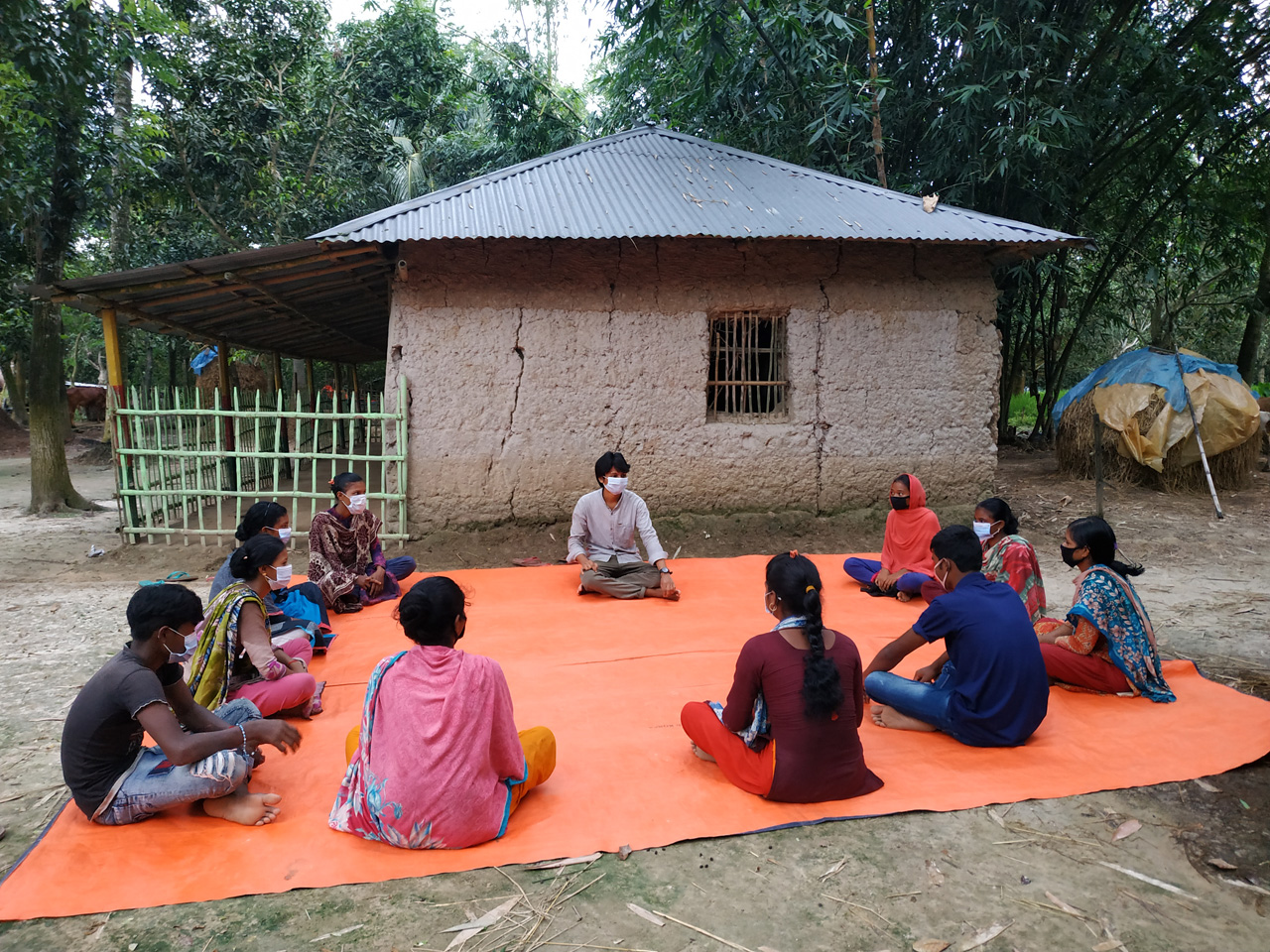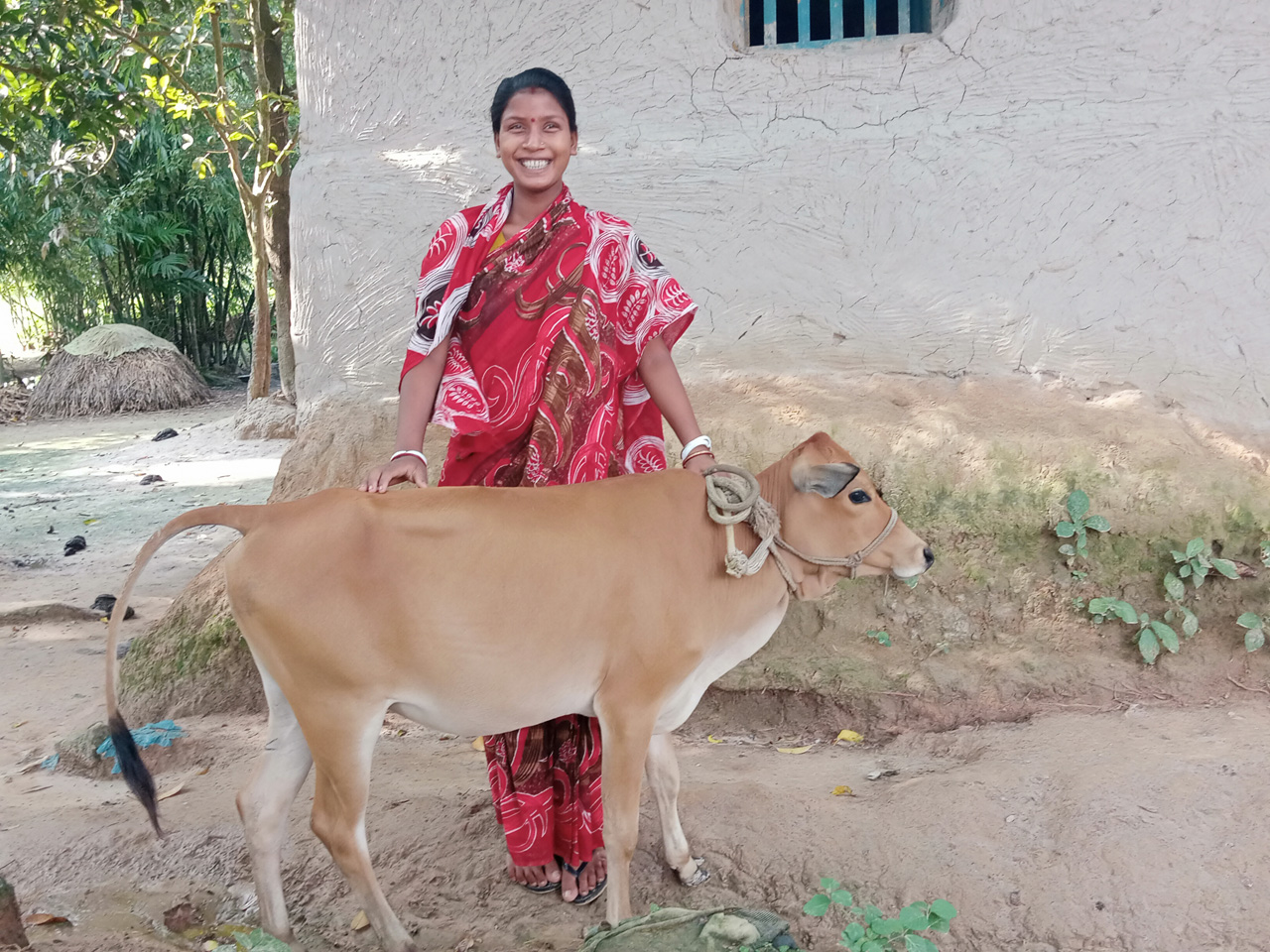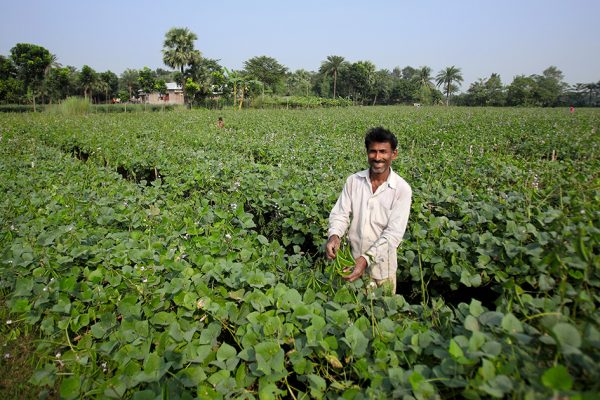Development that works for indigenous people in Bangladesh
Reading Time: 5 minutes
Bangladesh is home to over 50 indigenous groups. They speak over 35 languages and comprise over 1.8% of the population. 80% live in the plainlands in northern Bangladesh and the rest live in the south, in the Chittagong Hill Tracts. BRAC’s indigenous project has been working with indigenous people living in plainlands in Bangladesh for nine years now, and has learnt valuable lessons on what works.
Advertisements about Bangladesh prominently depict indigenous people living colourful lives – wearing rich dresses, celebrating festivals, enjoying longhold traditions amidst beautiful landscapes and folk music. While all of these are true, this colour depicts only part of their lives.
85% of indigenous people in Bangladesh do not own their own land. They are employed as sharecroppers – working on other people’s lands – or as wage labourers. Lack of access to formal employment, poor literacy rates, lack of representation in national forums and language barriers hinder socio-economic development.
BRAC’s indigenous project has been working with people from indigenous communities living in the plainlands of Bangladesh since 2012. As with all of BRAC’s work, everything happens at the community level – the project works primarily through 287 village development organisations in indigenous communities across the country. The organisations are community-driven platforms where the members work together to support each other.
Liloty Toppo is from the plainland Oraon community, and a member of a village development organisation (VDO) in Dinajpur, northern Bangladesh. Liloty’s husband lost his job as a day-labourer when the COVID-19 pandemic hit. Liloty was in her last trimester of pregnancy, but she started working as a house help and day-labourer to support her family.
“I had no choice but to work during my pregnancy, and getting an infection was my biggest fear – but I had no other option. The situation became worse when I gave birth to my son. It was very difficult for me to take care of him while working in other people’s houses.”
Women in charge
Women like Liloty are the main earners in plainland indigenous communities, simultaneously managing children and earning. However, when it comes to decision making processes, such as about household assets or family planning, their voices are often not listened to.
BRAC has been promoting to change this, by encouraging couples to work together to manage income, child care and household assets, and arranging awareness sessions on gender equity, family planning and safe sanitation. Since 2012, more than 775 spouses of indigenous VDO members have received gender training. Research shows it is working – women’s participation in household decisions in project areas rose from 6.2% to 42.8% in 2016.

Investing in youth to build a sustainable future
Every third indigenous student drops out of school at early primary level, mostly as a result of financial inability of families and remoteness of higher educational institutions. To reduce dropouts and motivate students to continue education, the project arranges career counselling sessions by inviting local, educated role models and the students enrolled in higher education, and people in financial assistance and capacity building.
The challenge of financial inability is primarily addressed in two ways: by providing direct financial educational assistance to the students coming from marginalised situations or by working with their families to be involved in different income generating activities.
The project also organises training on developing different skills, ranging from mechanical and computer skills to sewing, so that students can opt for extra earning to support themselves and their families. Over the years, hundreds of youth in these indigenous communities started their own small businesses, created earning opportunities for others and inspired other young people in their localities.
Members of village development organisations play an important role to mitigate the unwillingness of parents to send their children to remote institutes for secondary and higher education. They encourage parents to continue higher education for their children by referring them to existing university students and their achievements. This creates a social chain where the existing university students mentor high school graduates on university enrolment, admission process and arrangement of hostel seats.

Results have been great so far. The secondary education rate in the intervention areas has doubled over the years. More than 2,500 students have received financial assistance for their secondary, higher secondary and university education from the project.
Read more: Skilling the youth in a pandemic
Taking healthcare to doorsteps
High cost of healthcare, discrimination and communication gap with healthcare professionals due to language differences have been barriers in accessing quality healthcare services for the indigenous people living in marginalised situations in the northern part of Bangladesh. The indigenous peoples project introduced telemedicine as a solution.
Telemedicine is an online healthcare service where patients connect with a qualified doctor over video calls and receive medical consultations and prescriptions. In the intervention areas, the service is being operated through the village development organisations where members can schedule their appointments.
BRAC has eight to 10 doctors who provide consultation to these communities voluntarily, with most being women, making it easy for the women patients in particular to share their medical concerns. While finding a doctor from the inidigenous communities continues to remain challenging, a paramedic or relevant medical professional from their community is always present with the doctor during the consultation, to address the language barrier by translating the advice in the native language of patients.
Language difference has also been a barrier in reaching indigenous people with COVID-19 awareness messages. In 2020, when different government and non-government organisations were disseminating awareness messages on COVID-19, 60% of the indigenous people living in plainlands remained untapped.
Communication on safety precautions and protocols needed to be in a language the community understood. The project reached more than 16,000 people with life-saving information on COVID-19 by adopting the messages in Sadri and Santali (indigenous languages).
Read more: How can behavioural insights help us to increase handwashing?
Creating an alternative livelihood
Sharecropping often does not earn enough income to support a family’s needs. As a result, every family member, including the children, needs to participate in family finance. The indigenous project supports indigenous families with low incomes to boost their earnings.
The project arranges training on livestock rearing, sewing, homestead gardening and other skills to build their capacity and provide them with assets which are matched to their skills. This creates a pathway for participants to start an alternative earning opportunity.
The improvements in their livelihoods have been impressive. Since 2012, 65% of the indigenous communities in northern Bangladesh have been equipped with these income generating skills and activities. Annual income rose by 36%.
A rapid survey done by the project between March 2020-April 2020 found out that 90% of people from indigenous communities living in the plainlands suddenly lost their earnings, as a result of the pandemic. Like Liloty, 89% of them faced food insecurity. Building resilience to shocks was vital.
The project trained the participants with homestead gardening skills and provided seeds during the pandemic through door-to-door visits. Liloty received a cow as her asset and training on cattle rearing. She can now earn from home through her cattle, and meet her and her child’s nutritional needs through homestead gardening.
“Having an asset makes me feel secure. When the pandemic started and my husband lost his job, we had nothing to fall back on. Now I have one asset of my own, and I know how to capitalise on this”, says Liloty.

Developing local ambassadors
Representation of indigenous communities in national platforms and advocacy for their rights have always lagged behind due to cultural and language barriers. National representation of the indigenous communities is an urgent need to ensure that their voices are heard.
With a focus on local leadership development and strengthening relationships between indigenous communities and the local government, BRAC’s indigenous project conducts regular coordination meetings between key representatives from each party, and ensures visibility in different national and religious festivals throughout the year.
An annual youth conference is organised in different regions where young people get opportunities to discuss key issues in their communities with representatives from the government. The last conference was held before the pandemic, in 2019, and the topic of discussion was land issues and land rights of indigenous peoples.
Read more: Village cooperatives addressing COVID-19: Stories from the gas-field regions of greater Sylhet
The challenges facing Bangladesh’s indigenous communities are complex, and they will not go away overnight. Holistic and long-term development approaches are essential to address the lack of representation and access, and gaps in basic services. With more multifaceted interventions such as BRAC’s Indigenous Peoples Project, people from indigenous communities in Bangladesh can support themselves better, and live lives closer to the colourful portrayals in advertisements.
Sonali Chakma is a communications specialist in BRAC’s communications department and an indigenous person from the Chakma community in the Chittagong Hill Tracts, Bangladesh.
Project information
The Indigenous Peoples project of BRAC Integrated Development Programme was launched in 2012 to empower indigenous people through improving livelihood opportunities, promoting indigenous culture, building leadership capacity and advocating for indigenous peoples’ issues. The project works with 84,000 indigenous people in seven upazilas and three districts in Northwestern Bangladesh, through 287 indigenous village development organisations.





